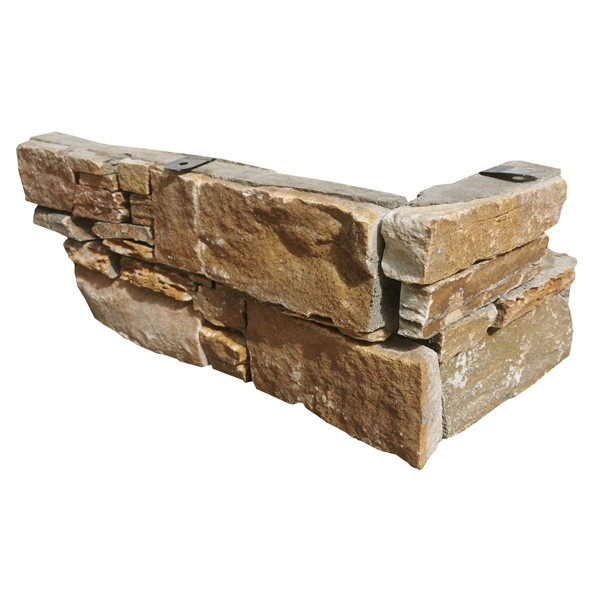Introduction:
Cobblestone has been a popular choice for pathways, driveways, and outdoor spaces for centuries due to its durability and timeless aesthetic appeal. However, traditional cobblestone can be difficult to work with and costly to install. In recent years, a new option has emerged that offers the same classic look of cobblestone with added benefits - cultured cobblestone. In this article, we will explore the various options available in the world of cultured cobblestone, highlighting their beauty, versatility, and practicality.
What is Cultured Cobblestone?
Cultured cobblestone is a man-made product designed to replicate the look and feel of natural cobblestone while offering improved consistency and ease of installation. Made from a combination of concrete, aggregate materials, and pigments, cultured cobblestone is molded into various shapes and sizes to mimic the irregularities of natural cobblestone. visit website manufacturing process allows for greater control over color, texture, and pattern, resulting in a product that is both aesthetically pleasing and durable.
Benefits of Cultured Cobblestone:
There are several benefits to choosing cultured cobblestone over natural cobblestone or other paving materials. Some of the key advantages include:
1. Cost-Effective: Cultured cobblestone is generally more affordable than natural cobblestone, making it a cost-effective option for homeowners and businesses looking to achieve the classic cobblestone look without breaking the bank.
2. Uniformity: Unlike natural cobblestone, which can vary in shape, size, and color, cultured cobblestone offers a consistent appearance throughout the installation. This uniformity makes for a more polished and professional finish.
3. Durability: Cultured cobblestone is designed to withstand the elements and heavy use, making it a long-lasting paving option for high-traffic areas such as driveways and walkways.
4. Versatility: Cultured cobblestone comes in a variety of shapes, sizes, and colors, allowing for endless design possibilities. Whether you prefer a traditional cobblestone pattern or a more modern look, there is a cultured cobblestone option to suit your style.
Types of Cultured Cobblestone:
There are several types of cultured cobblestone available on the market, each offering unique characteristics and design possibilities. Some of the most popular options include:
1. Interlocking Pavers: Interlocking pavers are a type of cultured cobblestone that feature a tongue-and-groove design, allowing the individual pavers to fit together seamlessly. This design creates a strong and stable surface that is ideal for driveways, patios, and walkways.
2. Tumbled Pavers: Tumbled pavers are manufactured to have a weathered, aged appearance, mimicking the look of natural cobblestone that has been worn down by time. This rustic aesthetic adds charm and character to outdoor spaces.
3. Permeable Pavers: Permeable pavers are designed to allow water to flow through the joints between the pavers, reducing stormwater runoff and helping to prevent flooding and erosion. This eco-friendly option is ideal for sustainable landscaping projects.
4. Cobblestone Tiles: Cobblestone tiles are smaller, square-shaped pavers that can be used to create intricate patterns and designs. These tiles are often used for indoor flooring applications, adding a touch of old-world elegance to any space.
Design Ideas and Applications:

Cultured cobblestone can be used in a wide range of design applications, from traditional to contemporary. Here are some design ideas to inspire your next project:
1. Classic Driveway: Create a timeless look for your home by using interlocking pavers in a herringbone or basketweave pattern for your driveway. Add a border of contrasting pavers for a finishing touch.
2. Courtyard Retreat: Transform your backyard into a charming courtyard retreat with tumbled pavers arranged in a random pattern. Add a fountain or garden bed in the center for a tranquil oasis.
3. Garden Pathway: Line your garden pathway with cobblestone tiles set in a winding pattern to create a sense of whimsy and discovery. Plant colorful flowers along the edges to enhance the natural beauty of the space.
4. Modern Patio: For a more contemporary look, opt for large-format permeable pavers in a neutral color palette for your patio. Add sleek outdoor furniture and minimalist landscaping for a clean and sophisticated outdoor living area.
Installation and Maintenance:
Installing cultured cobblestone is a straightforward process that can be completed by DIY enthusiasts or professional contractors. Here are some general guidelines for installation:
1. Preparation: Excavate the area where the cobblestone will be installed, ensuring a stable and level base. Add a layer of compacted gravel or sand to provide a solid foundation for the pavers.
2. Layout: Plan the layout of the cobblestone pattern, taking into account any curves or corners in the design. Use string lines or chalk to guide the placement of the pavers.
3. Cutting: If necessary, cut the pavers to fit the edges of the installation using a wet saw or a chisel and hammer. Wear safety goggles and gloves when cutting pavers to prevent injury.
4. Installation: Begin laying the pavers in the desired pattern, starting from one corner and working your way across the area. Use a rubber mallet to tap the pavers into place and ensure a tight fit.
5. Finishing: Once all the pavers are in place, fill the joints with polymeric sand or mortar to secure the pavers and prevent shifting. Compact the surface with a plate compactor to set the pavers in place.
Maintenance of cultured cobblestone is relatively low compared to natural stone. Regular sweeping and occasional rinsing with water are usually sufficient to keep the pavers clean. Sealing the pavers periodically can help protect them from stains and fading due to sun exposure.
Conclusion:
Cultured cobblestone offers a practical and versatile alternative to natural cobblestone for a wide range of design applications. With its cost-effective pricing, durability, and design flexibility, cultured cobblestone is a popular choice for homeowners and landscapers looking to enhance their outdoor spaces with the classic charm of cobblestone. Whether you prefer a traditional look or a more modern aesthetic, there is a cultured cobblestone option to suit your style and budget. Consider incorporating cultured cobblestone into your next landscaping project to create a beautiful and enduring outdoor space that will be enjoyed for years to come.
